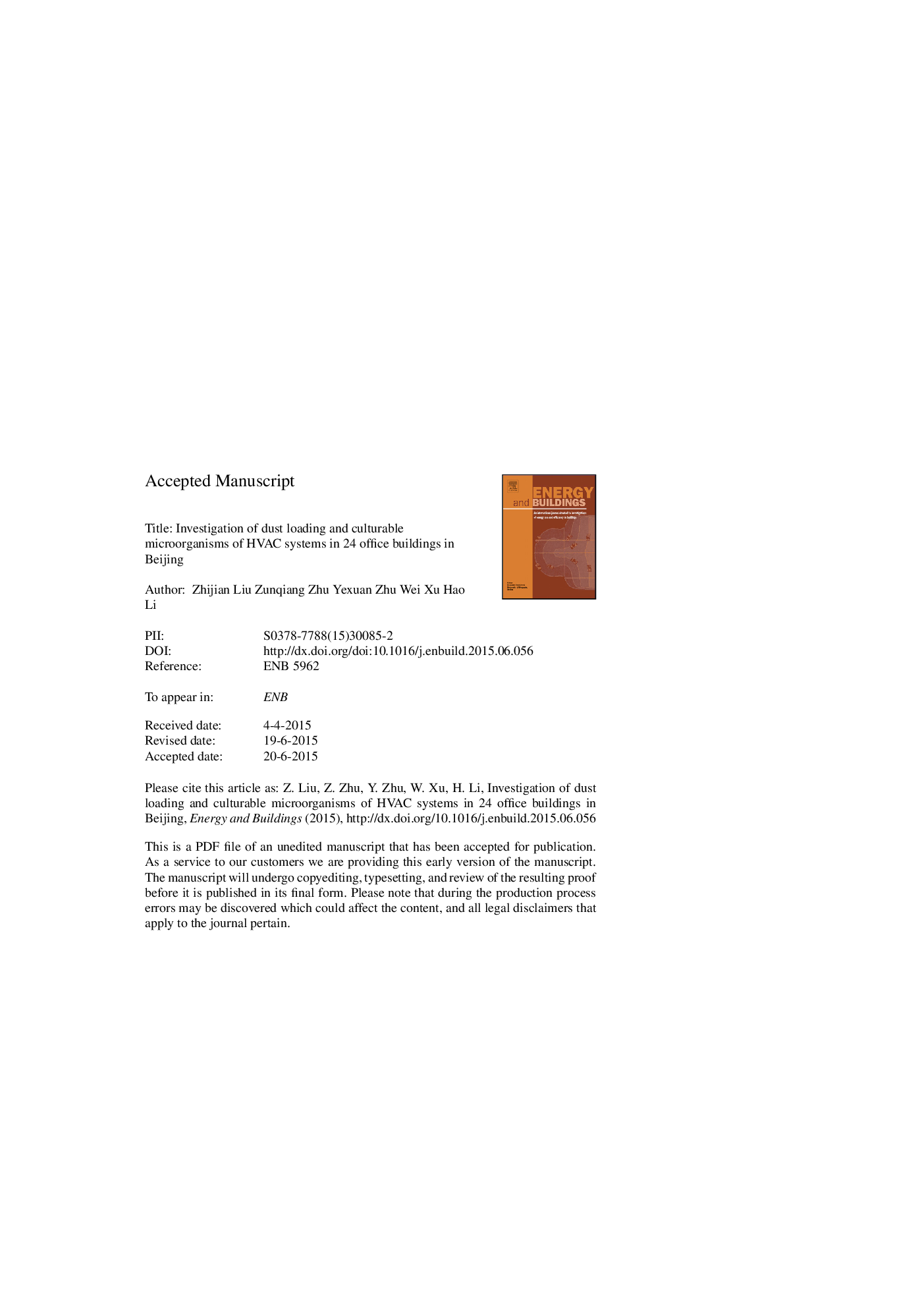| Article ID | Journal | Published Year | Pages | File Type |
|---|---|---|---|---|
| 6731232 | Energy and Buildings | 2015 | 30 Pages |
Abstract
To investigate the dust loading and culturable microorganisms contamination characteristics of HVAC systems in 24 office buildings, a series of field tests, which included temperature, RH, air velocity, dust loading, culturable fungi/bacteria loading, were conducted in the following: return air, fresh air, mixture air, cooling, and supply air segments. On the basis of these measuring results, the culturable fungi/bacteria number per gram dust was calculated and the predominant culturable fungi/bacteria species was identified. Statistical analysis showed that dust loading, culturable fungi/bacteria loading, culturable fungi/bacteria number per gram dust were in the range of 3.25-48.25 g/cm2, 32-221 CFU/cm2, 46-232 CFU/cm2, 53,815-124,807 CFU/gdust, and 63,395-10,383 CFU/gdust respectively. The maximum value for dust loading and culturable fungi/bacteria loading appeared in fresh air segments. The predominant culturable fungi were Penicillium, Aspergillus, Cladosporium, and Alternaria and the predominant culturable bacteria were Micrococcus, Bacillus, Staphylococcus, and Pseudomonas. There were significant positive correlations between dust and culturable fungi loading, dust and culturable bacteria loading, culturable fungi number per gram dust and RH, bacteria number per gram dust and temperature (p < 0.05). Results of these field measurements indicated that dust accumulation and/or high humidity and/or temperature should be properly controlled in HVAC systems to prevent the growth of culturable fungi and bacteria.
Related Topics
Physical Sciences and Engineering
Energy
Renewable Energy, Sustainability and the Environment
Authors
Zhijian Liu, Zunqiang Zhu, Yexuan Zhu, Wei Xu, Hao Li,
